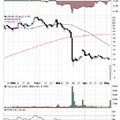Why do so many FXCM clients, and clients of other retail forex brokers have such a hard time becoming profitable? The one-two punch of leverage and high trading costs. Jannarone writes:
FXCM says it collected $98 in trading revenue per million dollars traded in 2011. Those fees could mount quickly. In the example of an account with $20,000, levered 50 to 1, each trade costs about half a percentage point of the customer’s equity. The average active account made 2.7 trades per day last year.
If your account is getting hit 1.35% in trading costs per day (2.7 * 0.5%) you have to do some pretty nifty trading to make up for it. Apparently not many do. Take heed what Josh Brown, The Reformed Broker says about retail forex trading, “Just don’t do it.”
Kevin Hughes:
Go to any of these sites — FXCM.com, Global Futures & Forex, Oanda.com, etc — and you will get the distinct impression that you are dealing with a warm-hearted, professional broker, where your interests are paramount.
But in many cases the exact opposite is the case. Note this line from the Gain prospectus:
"The majority of our revenue is derived from our activities as a market-maker to our retail customers, where we act as the counterparty to our customers’ trades."
$100bn — that’s the daily figure for trading volume in the retail foreign exchange market, where amateur plungers play the dollar and the like.
Our customer base is primarily comprised of individual retail customers who generally trade in the forex market with us for short periods…
As a market-maker, we take an equal and opposite position to our customers when executing a trade. We believe it is neither economically optimal nor necessary from a risk perspective to hedge all of our customers’ trades on a one-to-one basis…
Our Madcap Speculator (MS), having been lured by an advert or other promotion, puts up $500 to “play the dollar.” He thinks the dollar is going to 1.75 versus the Euro — and he may well be right, given that we’ve already moved from 1.25 to 1.50 in the past six months or so. FXhustle.com offers the Madcap Speculator 200x leverage on his initial margin deposit of $500. That allows the client to go long the euro and short the dollar to the tune of $100,000. Now, either because he’s cautious or because FXhustle have insisted he do so, our MS places a stop loss on his trade — limiting his total possible losses to $1,000. Which is where FXhustle becomes the near-certain winner and Madcap Speculator becomes the likely loser. MS might be right about dollar/euro going to $1.75, but even if it does, we can be absolutely certain that it will NOT do so in a straight line. And, because he’s levered 200 times, our little speculator cannot sustain much volatility without being stopped out. FXhustle, on the other hand, acting as MS’s counterparty, can endure much greater price divergence — even without having a view on the future of the dollar. With a simple algorithm covering market volatility and the leveraged state of clients, FXhustle can make near-certain returns — in just the same way that a casino takes a pre-defined cut at the roulette wheel.
A bejegyzés trackback címe:
Kommentek:
A hozzászólások a vonatkozó jogszabályok értelmében felhasználói tartalomnak minősülnek, értük a szolgáltatás technikai üzemeltetője semmilyen felelősséget nem vállal, azokat nem ellenőrzi. Kifogás esetén forduljon a blog szerkesztőjéhez. Részletek a Felhasználási feltételekben és az adatvédelmi tájékoztatóban.
